Canon EF 24-70 mm f/4L IS USM
4. Image resolution
First let’s check how the tested lens performed in the frame centre. Appropriate results we got at 24, 45 and 70 mm are presented below.
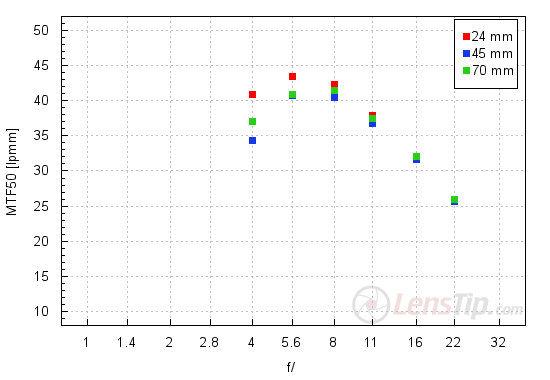
The results at 24 mm are truly sensational. Already at the maximum relative aperture the MTFs exceed a very high level of 40 lpmm and on stopping down they reach almost 44 lpmm so a value worth any good “system” prime. The middle of the focal range is actually the weakest but even there you shouldn’t complain at all. At the maximum relative aperture you get a result of almost 35 lpmm and on stopping down by 1 EV you see the MTFs approaching 40 lpmm. The maximum focal length is a tad better than the 45 mm focal length but still it is nowhere near the brilliant performance at the wide end.
Please Support UsIf you enjoy our reviews and articles, and you want us to continue our work please, support our website by donating through PayPal. The funds are going to be used for paying our editorial team, renting servers, and equipping our testing studio; only that way we will be able to continue providing you interesting content for free. |
- - - - - - - - - - - - - - - - - - - - - - - - - - - - - - - - - - - - - - - - - - - - - - - -
Are these results able to knock out the older Canon EF 24–105 mm f/4L IS USM? Not at all. It was tested on the EOS 20D but the MTFs from that camera are in accordance with those from the 5D MkIII, give or take 1-2 lpmm. Accordingly the 24-105L model in the 24-70 mm range didn’t have any problems with exceeding 40 lpmm already at the maximum relative aperture and we mean here every focal length from that range! If you compare the new 24-70 mm lens to that its results stop being so sensational.
Now let’s check the situation on the edge of the APS-C sensor.
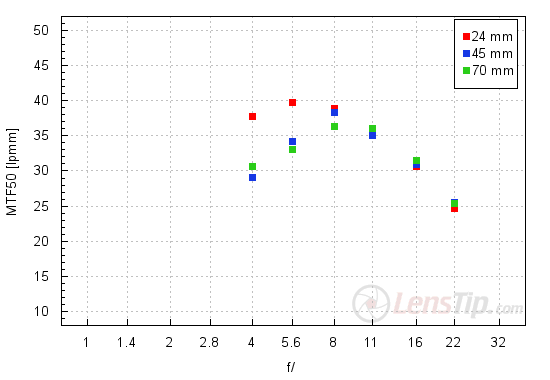
Once again the 24 mm focal length is truly beyond reproach. It is clear that the wide angle was taken care of across the frame. The longer end suffers because of it but still it is not a reason for serious complaining – even at the maximum relative aperture the MTFs brush against the decency level and on slight stopping down you get images of good quality. The new lens is noticeably better than the 24-105L which, at 70 and 105 mm, needed to be closed down to f/5.6 in order to get as high as 30 lpmm.
At the end we are going to describe the performance on the edge of full frame.
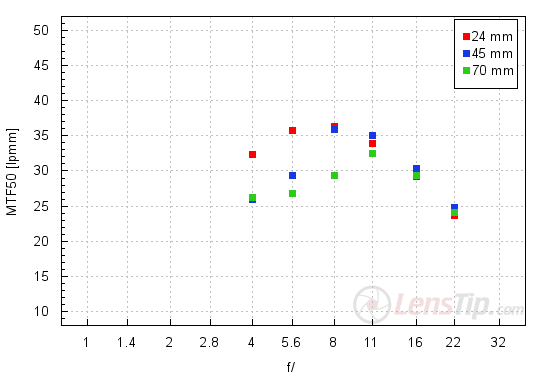
Once again the wide angle is the best but the longer focal lengths lag behind. At the 45 mm the maximum relative aperture is not especially useful, improving only near f/5.6. In the middle of the focal range the stopping down helps a lot, allowing you to reach better results. At 70 mm that effect is much weaker though; in order to enjoy images of a sensible quality you have to apply f/8-f/9 apertures.
In order to find a proper reference point and assess those results properly we should remind here the performance of the much more expensive and faster Canon EF 24-70 mm f/2.8L II USM. In the frame centre and on the edge of the APS-C sensor it fared exceedingly well but on the edge of full frame it was hardly perfect. It’s enough to say that at 45 mm its MTFs barely exceeded 30 lpmm and at 70 mm the best result was 32 lpmm. Compared to that the maximum results of its slower brother, being respectively 35.9 and 32.5 lpmm, look definitely good.
I suppose this chapter allows us to answer why launching the 24-70 mm f/4L on the market made sense. A narrower focal range than that of the 24-105L along with keeping significant physical dimensions allowed to construct a lens which is excellent not only in the frame centre but also on the edge of full frame, providing better images than those you get with the 24-105L and better than those coming from the expensive f/2.8 model.
We end this chapter traditionally, by presenting crops taken from photos of out resolution testing chart saved as JPEG files along with RAW files, used for the analysis above.
| Canon 5D MkIII, JPEG, 24 mm, f/5.6 |
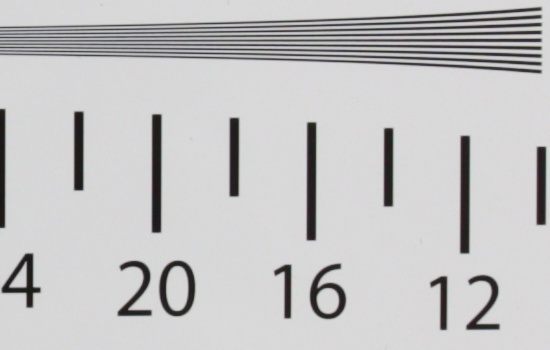 |
| Canon 5D MkIII, JPEG, 45 mm, f/4.0 |
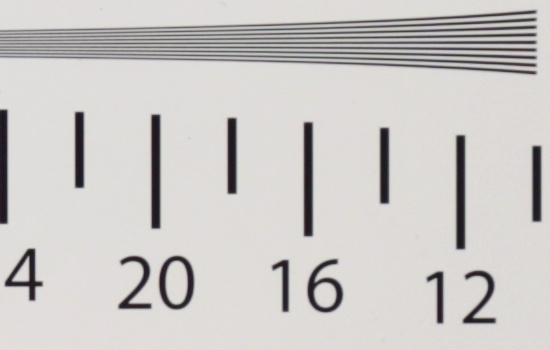 |






